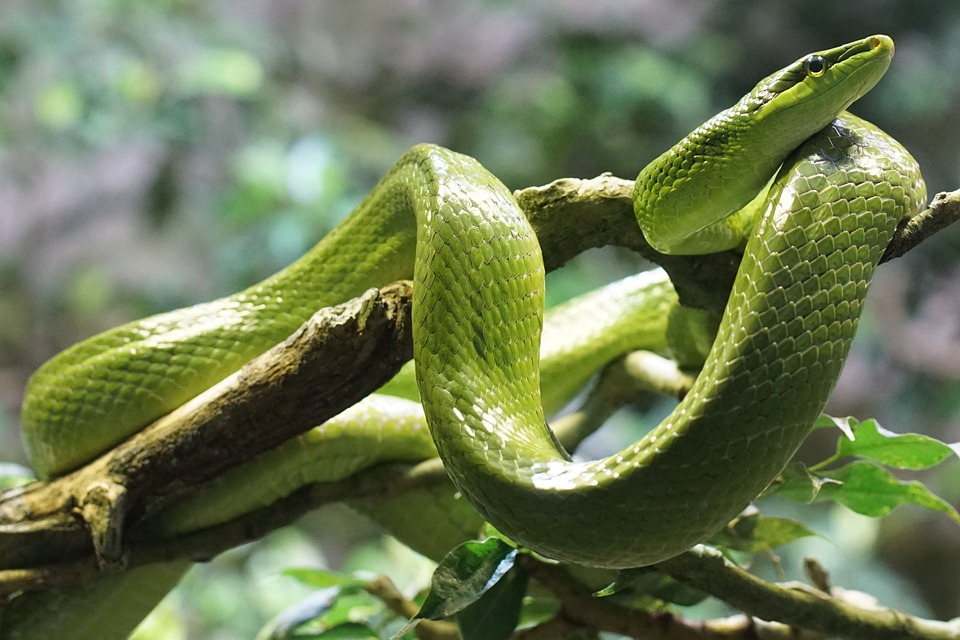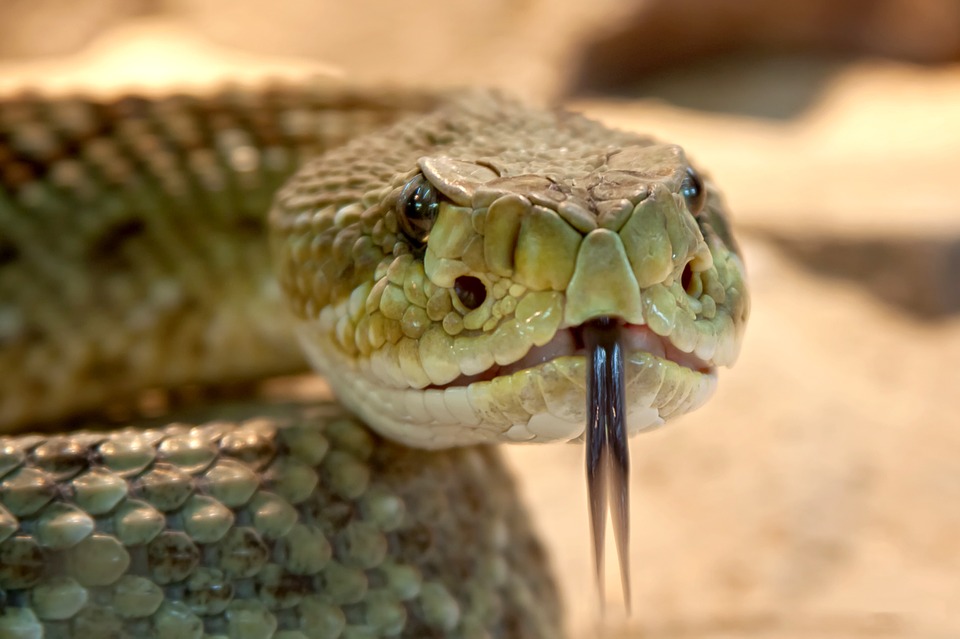We use affiliate links to run our site. When you buy through links on our site, we may earn an affiliate commission, without any added cost to you. Learn more
Snakes have captivated human curiosity for centuries, with their slithering bodies, mesmerizing patterns, and enigmatic behaviors.
These remarkable reptiles have evolved to thrive in diverse environments across the globe, making them a subject of fascination and awe.
In this article, we delve into the intriguing world of snakes and uncover 15 captivating facts that will leave you spellbound.
So, let’s shed our preconceptions and embark on a journey through the mesmerizing realm of these extraordinary creatures.
Interesting Snake Facts
Here are 15 interesting facts about snakes:
1. Snakes Have a Rich Evolutionary History
Snakes belong to the suborder Serpentes and are descendants of a group of ancient lizards. Fossils reveal that snakes have existed for over 100 million years, evolving from land-dwelling ancestors to develop their distinctive elongated bodies and limblessness.
2. They Come in a Dazzling Array of Species
With over 3,600 known species, snakes are a diverse group that inhabits a variety of habitats, from deserts to rainforests and even underwater. From the tiny thread snake, measuring a mere four inches, to the reticulated python, stretching up to 30 feet, snakes come in an astonishing range of sizes.
3. Snakes Are Masters of Adaptation
Thanks to their remarkable adaptability, snakes can be found on every continent except Antarctica. Some species have evolved specialized features to thrive in specific environments, such as the sidewinder, which has adapted to life in the scorching deserts of North America.

4. They Have an Extraordinary Sense of Smell
Snakes possess a highly developed sense of smell, aided by a specialized organ called Jacobson’s organ. Located in the roof of their mouths, this organ allows them to detect even the faintest of scents. It plays a vital role in hunting prey and finding potential mates.
5. Snakes Use Their Forked Tongue to Navigate
You might have noticed that snakes flick their tongues in and out. This behavior is not just for show; it serves a crucial purpose. By collecting scent particles on their forked tongues and transferring them to the Jacobson’s organ, snakes can effectively “smell” in stereo, enabling them to locate prey with remarkable accuracy.
6. Venomous vs. Non-venomous: The Distinctive Difference
Contrary to popular belief, not all snakes are venomous. In fact, only around 15% of all snake species possess venom glands. Venomous snakes use their venom to immobilize or kill prey, while non-venomous snakes rely on other hunting strategies such as constriction or swallowing their prey whole.
7. Snakes Shed Their Skin for Growth
Snakes have a unique ability to shed their skin regularly, a process called ecdysis. As they grow, their old skin becomes tight and worn, prompting them to shed it and reveal a fresh, vibrant layer underneath. The frequency of shedding depends on various factors, such as age, species, and environmental conditions.
8. The Eyes Have It: Snakes’ Unusual Vision
Snakes possess a specialized visual system. While they can see, their vision is quite different from that of humans. Snakes’ eyes are adapted to detect movement and perceive shapes, but their ability to focus on stationary objects is limited. However, they compensate for this by utilizing their exceptional sense of smell and heat-sensing abilities.
9. Some Snakes Can “Fly”
Well, not exactly fly, but a few snake species possess the remarkable ability to glide through the air. These snakes, known as flying snakes, can flatten their bodies and undulate while airborne, allowing them to cover impressive distances and navigate between trees. It’s truly a sight to behold!
10. The Ancient Art of Snake charming
Snake charming, a practice steeped in tradition, involves interacting with venomous snakes without getting bitten. Skilled snake charmers utilize a combination of music, rhythmic movements, and the careful handling of snakes to create an entrancing spectacle.
While it may seem like magic, snake charming is a display of the snake charmer’s understanding of snake behavior and their ability to control their movements.
11. Snakes Play Vital Ecological Roles
Snakes occupy various niches in ecosystems and play important roles as both predator and prey. As formidable hunters, they help control populations of rodents, insects, and other small animals. Additionally, they serve as a valuable food source for larger predators, contributing to the balance of delicate food webs.
12. The Largest Snake Ever: The Titanoboa
Long before humans walked the Earth, a colossal serpent known as the Titanoboa ruled the ancient rainforests. This prehistoric behemoth reached lengths of up to 42 feet and weighed over a ton. Fortunately, the Titanoboa is extinct, allowing us to marvel at its immense size from the safety of history books.
13. Snakes and their Mystic Symbolism
Throughout history, snakes have held symbolic significance in various cultures and mythologies. They often represent transformation, healing, or fertility. The ouroboros, a snake depicted in the act of swallowing its own tail, symbolizes eternity and cyclicality, reflecting the snake’s ability to shed its skin and renew itself.
14. Snakes Have Unique Reproductive Methods
While most snakes lay eggs, some species give birth to live young. This reproductive strategy, known as viviparity, allows the mother snake to provide her offspring with protection and nourishment until they are ready to face the world. It’s a fascinating example of the diversity of reproductive strategies found in the animal kingdom.
15. Snakes in Medicine and Science
Snakes have contributed to advancements in medicine and scientific research. Venom extracted from certain snake species contains compounds with potential therapeutic properties. From antivenoms to the development of medications for heart conditions, the study of snake venoms has paved the way for numerous breakthroughs in the medical field.
Final Thoughts:
As we come to the end of our journey through the captivating world of snakes, we hope you’ve gained a newfound appreciation for these remarkable creatures. If you found this article fascinating, don’t hesitate to spread the word. Share it with your friends, family, or anyone who might be intrigued by the secrets of the serpents.
And if you’re hungry for more intriguing articles on various topics, feel free to explore our site, where a treasure trove of knowledge awaits.
Frequently Asked Questions:
Are all snakes venomous?
No, not all snakes are venomous. There are many non-venomous snake species that play important ecological roles.
How do snakes move without limbs?
Snakes use their muscular body contractions and specialized scales to move in a slithering motion.
Can snakes hear sounds?
While snakes don’t have external ears like humans, they can sense vibrations and low-frequency sounds.
How long can snakes go without food?
Snakes can go for extended periods without food, ranging from weeks to months, depending on the species and environmental conditions.
Can snakes blink their eyes?
No, snakes cannot blink their eyes like humans or other animals. Instead, they have a transparent scale called a spectacle, which protects their eyes.
Amazon and the Amazon logo are trademarks of Amazon.com, Inc, or its affiliates.

Dear Sir/Madam,
Your site is giving very good information, It is very useful to us. You can also find in this site also.
Venkat
http://www.interestingfacts9.blogspot.com
Interesting Facts
The article is wonderful and i am very happy to read your article Essay writing service reviews is good writing company